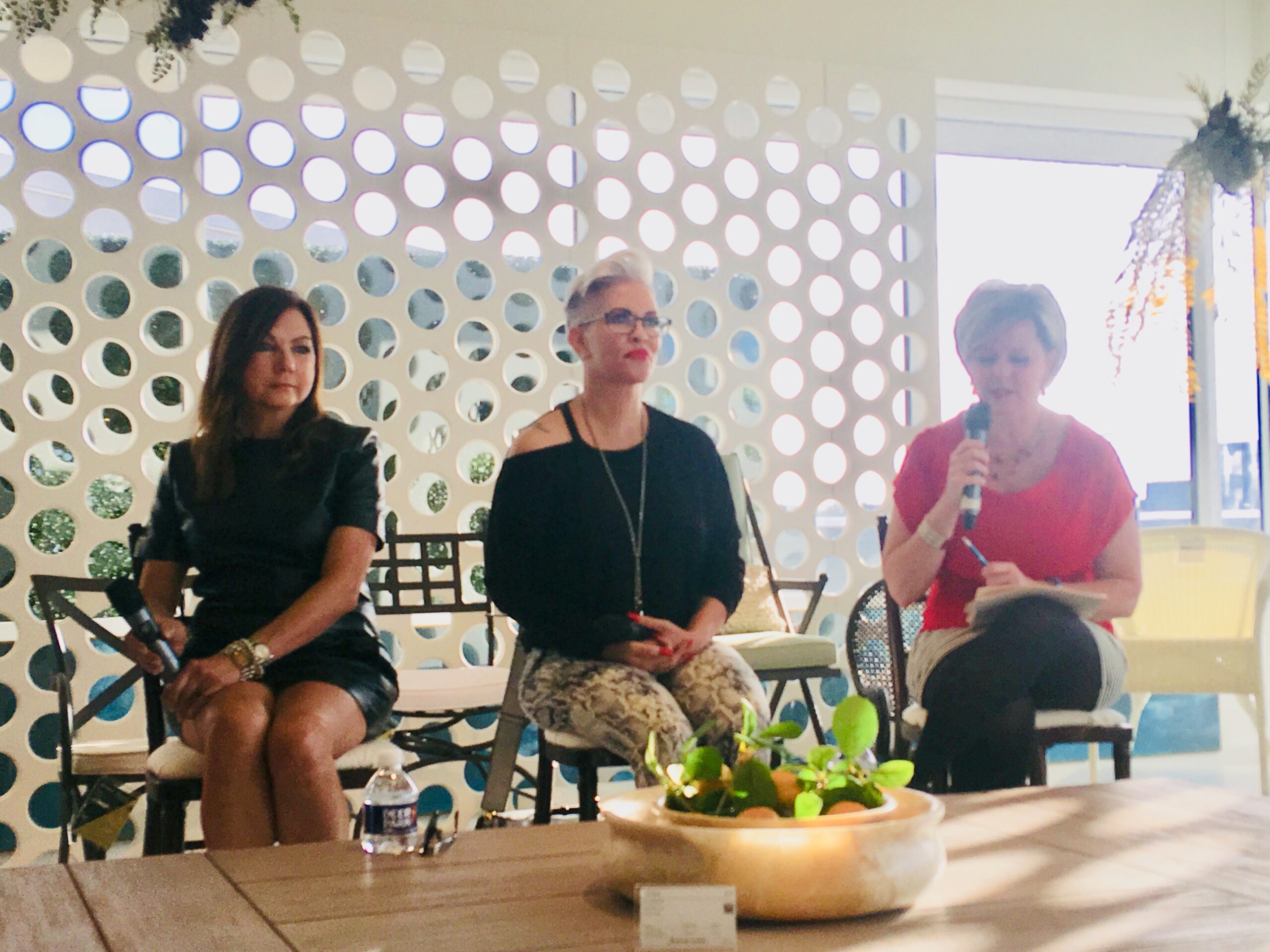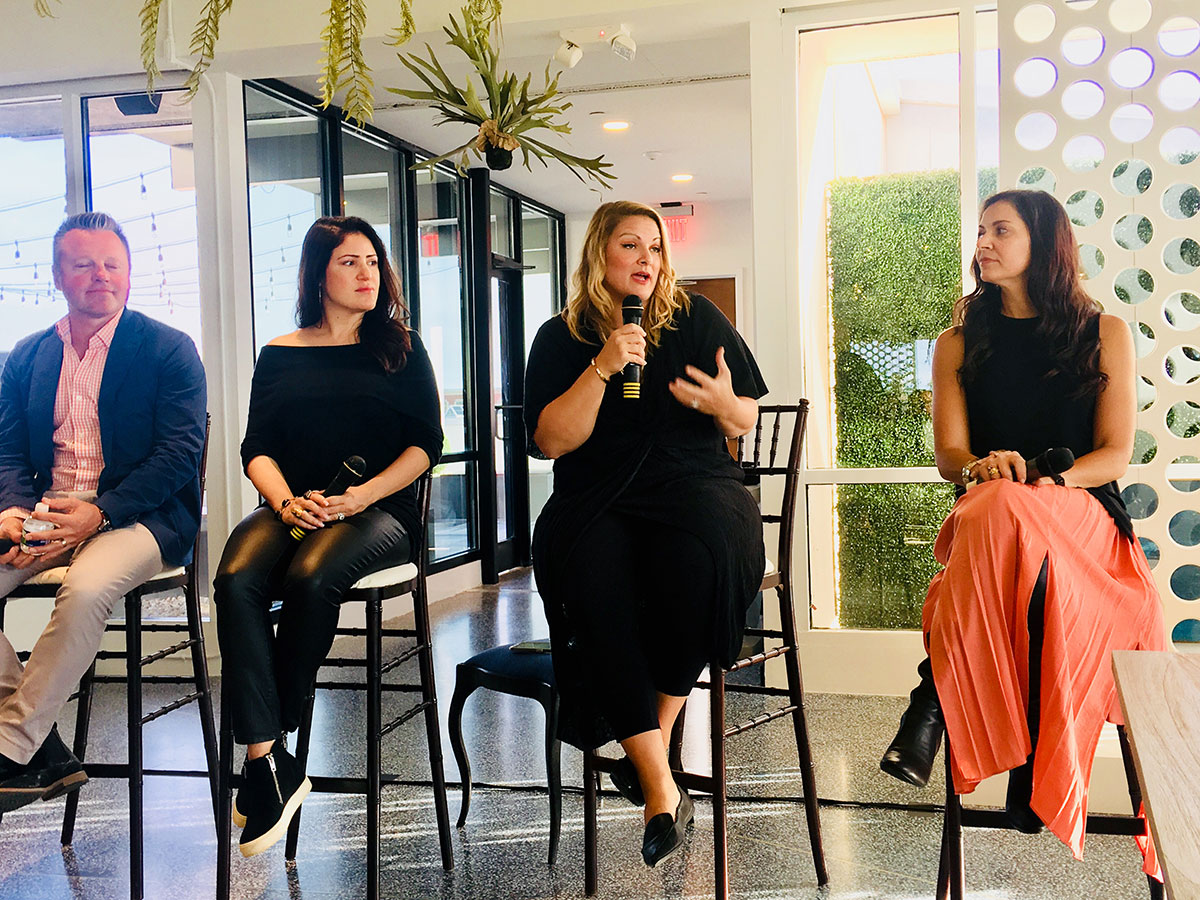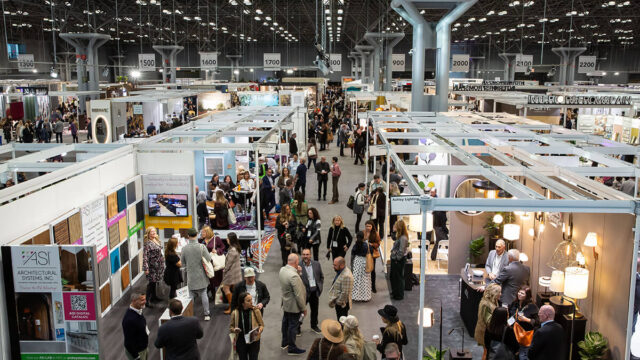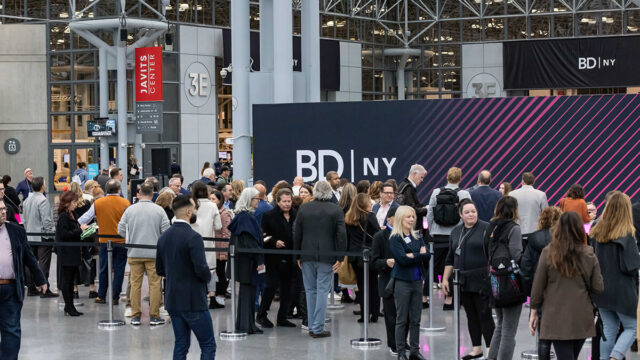As the lines between the home and the home away from home continue to blur, design is following suit.
During Hospitality at Market this month in High Point, NC, interior designers and creative professionals gathered inside Made Goods’ airy, light-filled showroom to hear from InspireDesign’s panel of experts as they explored this particular trend and shared insight.
InspireDesign is the media partner for Hospitality at Market.
Moderated by InspireDesign Editor-in-Chief Christina Trauthwein, she kicked off the discussion with some of the combinations of words used to describe this growing trend: “hospidential” and “resimercial.” Which do you prefer? No matter how you define it, the trend is likely here to stay.

“This mixing of residential and hospitality has been around for a while; and like all trends, they morph,” said Lauren Rottet, founding principal and president of Rottet Studio. “Hotels are about discovery: What did you learn, what was exciting and what did you Instagram? It is residential, but it’s a step above—and then a new one being layered into it is co-working spaces. It’s all going in a cyclical and interesting way.”
Kelli Ellis, an internationally recognized designer, artist, speaker and author, strives to create a user experience that reflects a specific mission in her designs. Her latest project, Soul Community Hotels, focuses on sustainable and responsive design.
“Our brand is focused on community engagement and that grassroots feeling,” said Ellis. “We are embracing the crossover of hospitality and residential. Instead of taking the personality of the single homeowner, you have to take the brand and give it personality. So, what is the personality of the brand? Our is based on the soul—we reuse, we recycle—and the community—we tap local resources—and it’s that grassroots feeling. We want the community to feel like this is their place to hang out. It takes a lot of effort to do that. You do have to go back into your residential roots and say, ‘Alright, what makes something comfortable and homey? What makes this a place I want to crash and hang out?’ It’s not a trend, it’s a movement that will stay.”
When it comes to designing a hotel interior, designer Blanche Garcia is keenly aware of the needs of the hotel brands and what guests crave during their stay.
“You want that homey feel, but we still want the fancy sheets and all those things. It feels tactile and approachable, but the luxury has not been taken out of it,” said Garcia. “When people say residential, what they’re saying is they want something local and authentic at its highest level. You want the girl next door, but you want to make sure she can dress up and go out to dinner.”
Mark Friesen, principal, Beyer Brown, has witnessed the evolution of hotel design and how the demands and needs of travelers have also changed.
“Fifteen years ago, hotels were sterile because here was no transparency,” he said. “You didn’t know what a hotel was going to look like before you stayed there. Now, with the internet and publications telling guests what to expect, there is increasing competition in the hotel world to make sure your property is the latest and greatest. The renovation cycles are allowing for this to happen more and more. Fifteen years ago, you only had to renovate your hotel every 10-15 years and now, it’s more of a seven-year cycle. You can afford to put more of a residential design together without having to risk the design being outdated.”
In the hotel industry, people matter, and it’s evident in the delivery of service, culture fostered on-site, and the overall design. So, how does that translate into creating a memorable stay? For Sonya Haffey, VP, V Starr Interiors, it all goes back to the people.
“What you have in your home is memories, and so we’re creating memories,” she said. “A lot of times, we’ll even give it a persona. For example, this hotel is ‘Judy’ and she likes this, and this is what she does on the weekend and her favorite bar is downstairs and she has three kids. We’re going through this whole person that we’re designing for and then we’ll go back to it. It’s not just a concept board, it’s related around a persona, and the story has to give that woman value instead of the space being a shell with some pretty finishes.”
For Dina Lamanna, design principal, hospitality interiors, HOK, residential and hospitality are converging right now on her latest project, the 172-unit Four Seasons Private Residences Nashville.
“It’s really exciting because we’re partnering with Marzipan, a design studio in Florida,” she said. “On the property, we have these interconnecting amenities and spaces. It’s about taking the Four Seasons brand, understanding the regional drivers of Nashville, but still whether it’s on the hotel side or the residential side, you’re trying to create a transformative experience. For many of the buyers, it’s not their primary home so they want to feel a bit of that Nashville soul, but they still want the tailored elegance of Four Seasons.”
For residential designers looking to get into hotel design and vice versa, Rottet urges them to learn as much as possible and find people who are the experts in what they do.
“As creatives, we create on a lot of different levels,” said Rottet. “If you are a residential designer striving to go into the hospitality market, it’s about educating yourself on what is appropriate for those types of spaces. But the truth of the matter is that you’re really not going to learn as much as what you’re going to learn on your first project. It’s a little easier for the hospitality designer to jump into residential. But, it’s really interesting because when they do, it’s sometimes more regimented. You have to be super aware of the client relationship and keep learning.”
“When you are transitioning into hospitality, the biggest thing I had to learn was I need someone like Mark [a procurement professional] because you go from one to there being 178 of them and they need to be for hospitality, and you have to learn all of the codes,” said Ellis. “What is the process like? How do I find those pieces? Are these items going to withstand all the codes? It’s about all of those things.”
Friesen added, “I totally agree with you that the purchasing part is important, but having a designer who understands that there is some flexibility required and that there are so many more stakeholders or decision makers in hospitality who are going to play to the final decision—the brand, operators, owners and even the lenders—is critical. For the designers who are successful, they can roll with the punches a lot better. You can’t stamp your feet and run off because they’re taking away the jewelry of the room… Flexibility goes a long way and so does being a team player.”




